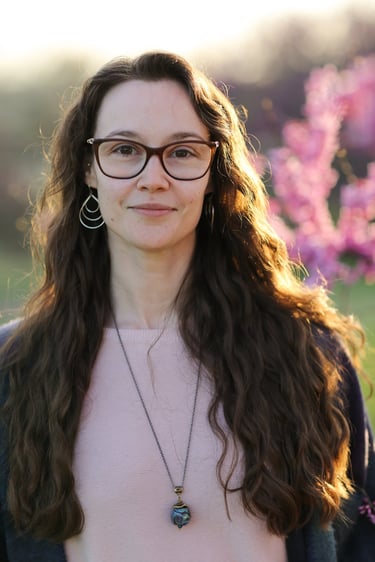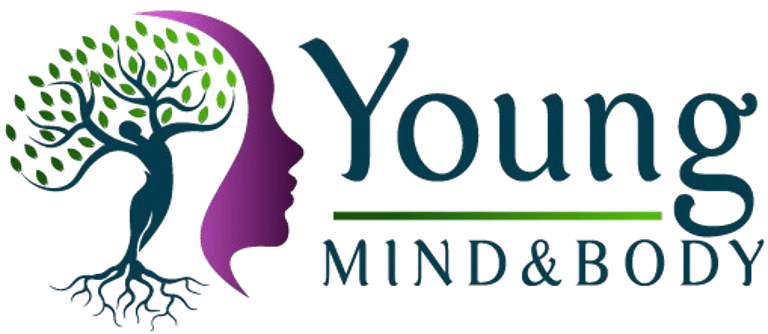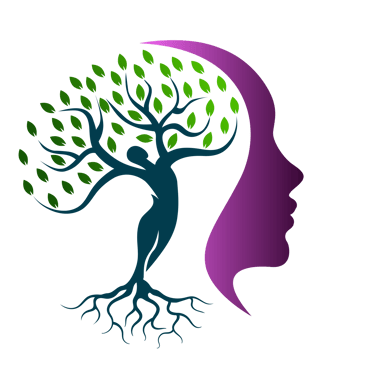About Dr. Sydney Young
Many of my clients are neurodivergent and have appreciated my candor about being neurodivergent myself. Whether you are neurodivergent or not, authenticity is a core value I prioritize, and as a therapist I aim to create an empathetic space where you can show up as your true, sometimes messy self. I am inspired by my clients’ growth and honored to support them in discovering their innate healing capacity.




This is Aurora. I occasionally bring her to the office with me.




The photos on this page taken in the park across the street from my office. Clients can always request to go for a walk or sit in the park during a 1-on-1 session.
Photo Credits: Amy Enderle
My mind-body education
I grew up in Columbia, MO where dance and taekwondo were my main extracurricular activities. By the age of 12, dance had become my main focus. I spent my summers away at ballet programs across the country, including Pacific Northwest Ballet in Seattle, and LINES ballet in San Francisco. For my senior year of high school, I moved away from home to attend the ballet program at the University of North Carolina School of the Arts. I then moved to NYC to join Cedar Lake Contemporary Ballet as a full company member. It is noteworthy that dance is an art form at the intersection of the emotional and physical worlds. Turns out, neuroplastic symptoms also live at this intersection. So in many ways, my education on the mind-body connection began quite early.
I am a proud graduate of Truman State University*, where I graduated Summa Cum Laude, Phi Beta Kappa, with bachelor degrees in psychology and kinesiology. The education I received there provided me with a strong foundation for my current work.
I earned my M.D. from the University of Missouri, where a lecture on Mindfulness Based Stress Reduction (MBSR) ignited my interest in neuroplasticity. After experiencing for myself what a profound difference MBSR can have, I became committed to incorporating this knowledge into my practice.
I ultimately pursued licensure as a therapist, so I could work at the intersection of the mind and the body and have a closer working relationship with my clients. I earned my master's in Clinical Mental Health Counseling from the University of the Cumberlands and became a licensed therapist (LPC) in Missouri. Shortly after, I completed training in Pain Reprocessing Therapy, a method of neuroplastic symptom retraining.
My chronic pain journey
While there were MANY positives that came from my early training in the movement traditions of dance and taekwondo, treating myself with kindness and compassion was not one of them.
My back pain and leg numbness started at age 13. An MRI at age 15 didn’t find anything wrong. My symptoms continued to come and go over the years. At age 20, x-rays revealed a low grade spondylolysthesis. I assumed this must be the reason for my symptoms all these years. A few years later, while I was applying to medical school, my back pain and leg numbness "just so happened" to flare up so that I could barely sit or stand for an hour.
I ended up having a spinal fusion at the age of 24. The surgery gave me a sense of safety that my spine was stable, but my symptoms continued to come and go over the years. I figured it was just remaining muscle tension or asymmetry in my body. Once I learned and implemented neuroplastic symptom retraining, my chronic back pain and leg numbness went away after living with it for over two decades.
*It was such a gift to receive an education at Truman State University. I had so many professors encourage my love of learning with great enthusiasm. Among them, I have to specifically thank Dr. Michael Bird and Dr. Jeremy Houser for their mentorship, Dr. Hena Ahmad for helping me believe my voice mattered, Sal Costa for his unwavering investment in his students and joy of teaching, Dr. Sherri Palmer for introducing me to attachment theory, and Dr. Eric Patterson for just being an authentic human in addition to making chemistry fun.










